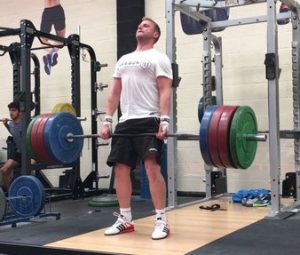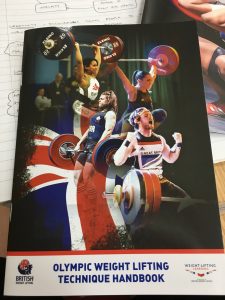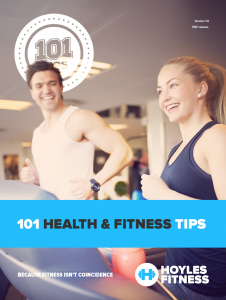More Exercises Doesn’t Mean More Strength
More Exercises Doesn’t Mean More Strength
I’ve recently started my journey into weight lifting coaching and one of the screaming messages I’ve picked up is that more exercises doesn’t mean more strength.
Strength is important. Along with flexibility, it’s the most important aspect of our fitness. All physical abilities have a grounding in strength, from walking to lifting. Even balance has a basis in strength. Your strength underpins your ability to do all physical tasks, from the mundane to the amazing.
The crossover benefits to being strong are massive…
- Strong = being able to lift more = better physique.
- Strong = reduced injury risk = less likely to miss training through injury.
- Strong = able to cope with higher training volume = more muscle.
- Strong = better athletically = better sportsman/woman.
- Strong = reduce/reverse the ageing process.
- Strong = quicker recovery from injury.
Put simply, we all need to be relatively strong, so knowing how to improve strength is a useful skill to have.
Don’t fret though, I’ve got you covered.
How Weight Lifters Improve Strength
Weight lifting is the ultimate strength sport. Competitors have one aim – to lift the heaviest weight they can. Aesthetics, repetitions, times etc don’t feature. It’s purely strength.
Part of the coaching process is learning how to put together the training programmes for lifters. The outcome measure being simple: is the lifter stronger at the end of the programme than they were at the start?
On the coaching course, we’ve seen example programmes for elite level lifters and the thing that surprised me is how few exercises even the elite lifters perform. The absolute focus is on strength and building strength using full and accessory lifts, with a focus on quality of exercise selection rather than big, varied training and exercise programmes.
This fits well with my own thinking on training – if you look at these two articles I’ve written, you’ll see it’s been part of my training thinking for a while…
These two article reinforce the message – more exercises doesn’t mean more strength.
Further evidence of the simplicity of weight lifting training programmes can be found on the web. Take a look at this sample workout from Catalyst Athletics. In the programme, the athlete performs only 3-4 exercises each session. It’s the quality of the execution of these exercises, not the quantity that determine the success of the programme.
By the way, Catalyst Athletics is a weight lifting club that produced American champions and record holders, so their programming works.
Catalyst Athletics Sample Weight Lifting Programme
Monday
Clean & Jerk – 5 x 2+1
Clean Pull – 3 x 3
Back Squat – 3 x 5
Wednesday
Snatch – 5 x 2
Snatch Pull – 3 x 3
Front Squat – 3 x 3
Thursday
Power Snatch – 5 x 2
Power Clean & Power Jerk – 5 x 2(1+1)
Overhead Squat – 3 x 3
Saturday
Snatch – heavy single
Clean & Jerk – heavy single
Front Squat – heavy single
Number of Exercises vs Volume of Exercise
Don’t confuse number of exercises with volume of exercise. You can still do a lot of volume, even if you have few exercises.
If we take the programme written above for example, on first glance it doesn’t look like much work. When you factor in the warm up, the warm up sets (where the lifter will perform each exercise with progressively heavier weights until he/she reaches their training weight for the exercise), then the actual work set, they can accumulate a significant amount of work.
The other point to consider is the intensity of this work. A large chunk of the work done in this programme will be approach or at the lifters maximum weights. This is how strength is built, by lifting progressively heavy weights, not by hundreds of reps at a significantly sub-maximal level.
When so much of the training session is performed at maximum or near-maximum effort, it doesn’t take long to fatigue.
When it comes to exercise, there’s a law of diminishing returns. When you are fatigued, your movement quality drops. Your form dips. Ability to exercise well is reduced with every extra rep. This is why you want, or even need to limit the movement patterns you ask your body to perform when trying to build strength.
I agree with Pavel Tsatsouline when he says strength is a skill. Of course there’s a massive physical element to it, but when you break down an exercise you’ll understand that these movements are skill based. It’s hard to learn skills when you are tired.
When it comes to learning a skill, it’s vital you don’t try to do too much in one go. In school, your day is broken down into lessons. You focus on one thing at a time – you don’t mix science and English in the same lesson do you? The same should be practiced in strength training.
Strength Training Workouts in Practice
Select an exercise to work on. All of your exercises and accessory lifts should be based around this one exercise. More exercises doesn’t mean more strength, so keep them to the point. If you can’t justify an exercises’ inclusion in the training programme, bin it.
Real Life Strength Training Session Example
Here is my strength training session yesterday. I was focussing on the Clean and Jerk…
After my warm up I had three exercises I wanted to run through – Cleans, Cleans into Front Squats and then the full Clean and Jerk.
I worked up to my training weight progressively (probably about 10 reps per exercise until I was at my working weight). This part of my training is very proprioceptive. I base my lower weight reps on how I’m feeling – only when I feel my reps are good enough quality do I up the weight.
I don’t believe you can prescribe an effective weight lifting warm up because it’s all about technique and feeling.
When I was at my working weight (around 85% of my 1 rep max), used the following set and rep ranges for the Cleans and Clean and Jerk…
- 1 x 3
- 2 x 2
- 3 x 1
For the cleans into front squats, I did 3 x 5 because I didn’t want to over-fatigue my legs ahead of a cleans and jerk PB attempt!
There’s no need to make any of this complicated. More exercises doesn’t mean more strength.
The workout lasted around 1 hour. It was hard, but I made a lot of progress. I tidied up my form and technique, lifted a PB and cleaned 100kg for first time in a few weeks (PB 106kg at this point).
Using this kind of training I am stronger now than I have ever been and I’m in my 30’s – the time when we’d expect to start to see a physical decline.
Equipment wise, if you are going to strength train I’d suggest you pick up the correct footwear.. These are the shoes I wear and I rate them very highly…
Anyone can improve their strength and there’s plenty of reasons why we all should. Remember though, more exercises doesn’t mean more strength. Focus on quality of exercises, not quantity. Execute simple movements well, at a high enough intensity for you to make strength improvements.
Your body will thank you for it!


